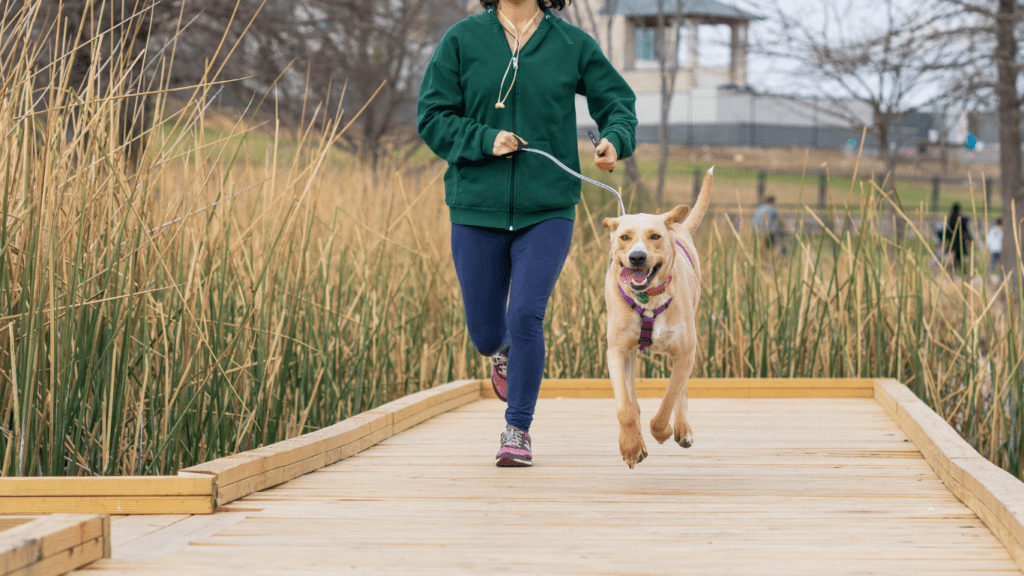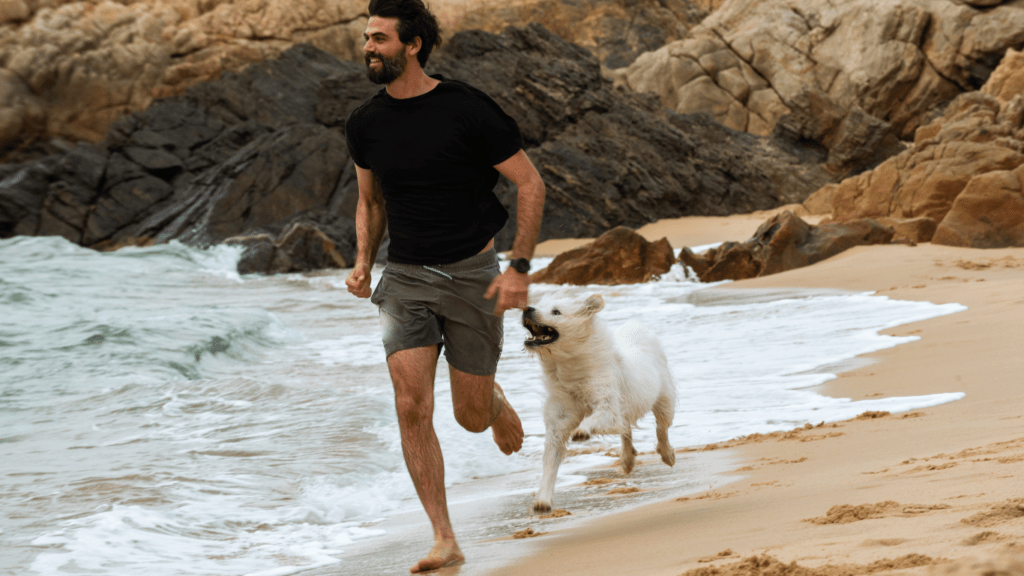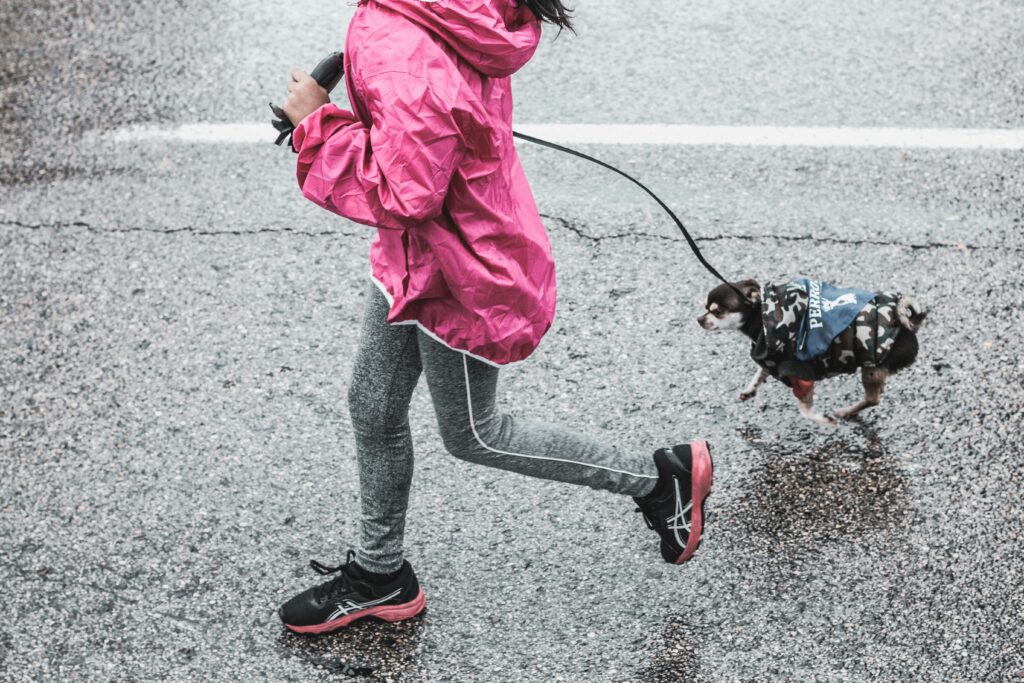Benefits of Running with Your Dog
Running with your dog offers multiple advantages, enhancing both physical health and emotional well-being. This section explores the primary benefits.
Improved Health for You and Your Pet
- Running improves cardiovascular fitness for both you and your dog.
- Consistent exercise reduces the risk of obesity, heart disease, and diabetes.
- Dogs require regular physical activity to maintain a healthy weight and muscle tone.
- Running together ensures that you both meet daily exercise goals.
Building a Stronger Bond
Shared activities strengthen the bond between dog and owner. Running provides a structured opportunity for quality time. Consistent companionship in such activities increases mutual trust and understanding.
This bond improves overall training effectiveness and enhances communication between you and your pet.
Preparing to Run with Your Dog

Running with your dog requires careful preparation to ensure a safe, enjoyable experience for both of you. Assess your dog’s fitness and gather essential gear before hitting the trail.
Assessing Your Dog’s Fitness
Evaluate your dog’s fitness before starting a running regimen. Consult a veterinarian to determine if your dog is healthy enough for running.
- young puppies
- senior dogs
- bulldogs
May not be suited for long-distance running.
Gradually increase the running duration to build endurance, and monitor your dog for signs of fatigue or discomfort during the run.
Essential Gear for Running
Select the right gear to keep your dog safe and comfortable. Use a well-fitted harness to prevent strain on the neck. Choose a high-quality leash designed for running, such as a hands-free leash with an adjustable waistband or shoulder attachment.
Carry water for both you and your dog, and consider collapsible bowls for easy hydration. Reflective gear or LED collars increase visibility during early morning or evening runs, ensuring safety in low-light conditions.
Training Techniques for Running with Dogs
Training your dog to run with you involves specific techniques to ensure a smooth, enjoyable experience for both. Start with basic obedience commands, then gradually introduce your dog to running.
Basic Obedience Commands
Basic obedience commands lay the foundation for safe and controlled running. Focus on commands like:
- sit
- stay
- heel
- leave it
Use positive reinforcement, such as treats or praise, to encourage your dog. Consistently practice these commands during walks before introducing running.
If your dog doesn’t respond reliably, enroll in a basic obedience class. Proper training ensures your dog responds quickly to commands, preventing accidents.
Gradual Introduction to Running
A gradual introduction to running builds your dog’s endurance and familiarity with the exercise. Start with brisk walks, then slowly increase the pace.
Transition from walking to short jogs, extending the running intervals each week. Watch for signs of fatigue or discomfort, pausing if needed. Running on different surfaces, like grass and pavement, helps your dog adapt.
Using a consistent route initially reduces anxiety, as your dog becomes familiar with the environment.
Safety Tips While Running with Your Dog
Running with a dog enhances the experience, but ensuring safety is paramount. Knowing your dog’s limits, weather, and terrain factors guarantees a pleasant run.
Recognizing Your Dog’s Limits
Understanding your dog’s physical limits is crucial. Age, breed, size, and health determine their running capabilities. Bulldogs, for example, struggle with long runs due to respiratory issues, while Border Collies excel in endurance running.
Look for signs of fatigue, such as heavy panting, drooling, or lagging. If your dog shows any of these signs, it’s essential to rest and hydrate immediately. Consult your vet for personalized advice on your dog’s fitness level and adjust your routine accordingly.
Dealing with Weather and Terrain
Running in hot weather poses risks like heatstroke and burns. Aim for early morning or late evening runs when temperatures are cooler. Carry water for both you and your dog to stay hydrated.
Different terrains affect your dog’s paws. Pavements can become hot, causing burns, while rough trails may cause cuts or abrasions. Check your dog’s paws after each run, and consider using dog booties for added protection.
Adjusting your route based on weather and terrain ensures your dog’s safety, keeping runs enjoyable for both of you.



